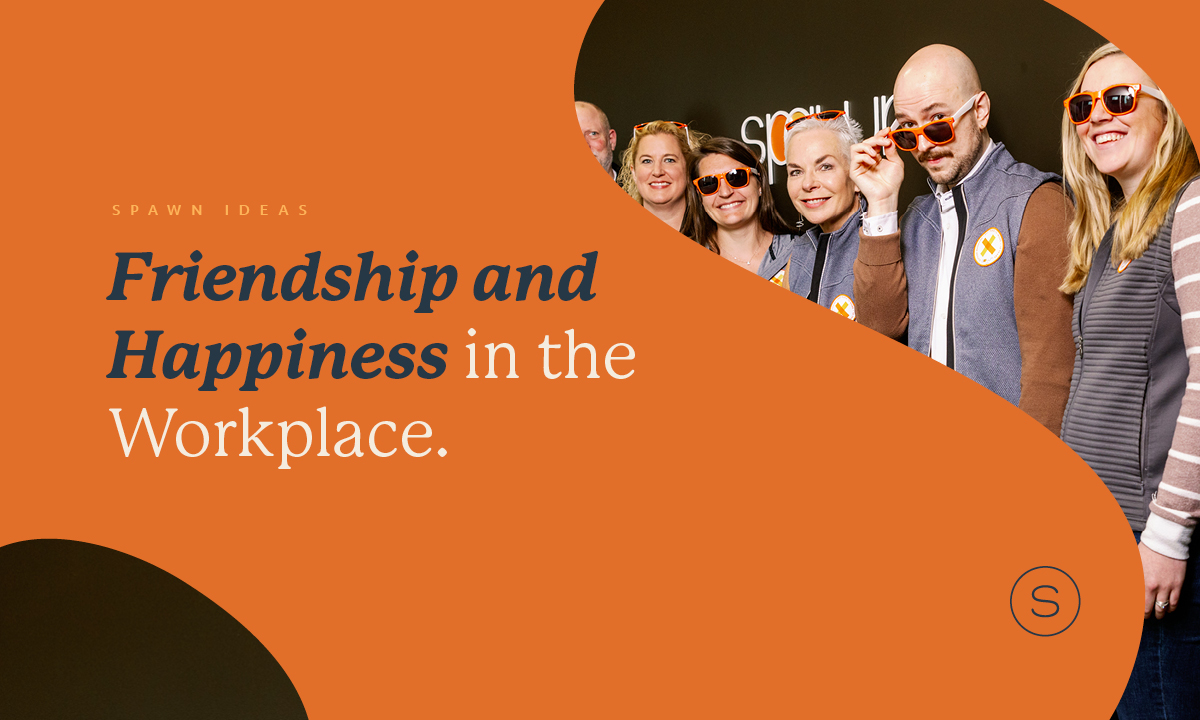At Spawn Ideas we’ve been perfecting remote work for more than a decade. Here’s what we’ve learned.
If 2020 gave us anything of a positive note, it might be the rapid, widescale adoption of remote working. It’s a breath of fresh air for us at Spawn Ideas, because we’ve been finding success with remote work for quite a while now, and we’re excited to see so many other businesses join in.
Pre-pandemic, sharing our enthusiasm for remote work was an uphill climb at times: People questioned the perceived challenge of having their agency team at a distance instead of in person, the difficulty of managing employees remotely, the complicated nature of having some folks in the office and some not, and the challenge of creating and maintaining a vibrant culture.
But Spawn takes pride in being able to access great talent from across the country with our forward-thinking remote-work policy. We currently have employees in five states, including our HQ in Anchorage, Alaska, and a hub in Denver, Colorado.
Every workplace — remote or not — has challenges, but we’ve found that with a well-designed policy, remote teams can work wonders for employees, employers, and clients alike.
Our experience is that remote work — works.
And we’re not alone anymore. A recent study from the Boston Consulting Group1 found that employers with optimized remote models experience:
A 15%-40% increase in productivity
A 40% reduction in absenteeism
A 10%-15% reduction in turnover
And more than 20% potential in cost reduction in real estate and resource usage.
These are the kind of benefits we see reflected in the work we do every day.
The reality is that work from home does not work for every person equally.
The phrase “optimized remote models” means carefully tested, uniquely customized remote-work plans. It does not mean that everyone is fully remote, or that one policy for remote work will work for every business or every employee. At Spawn, we’ve found that it takes some experimentation to find the right balance of structure and flexibility.
If you’re thinking of adopting a more remote-oriented office, it’s important to put the ever-present headlines on remote work in context for your individual organization, based on your industry, your work product, and your workforce.
As an advertising agency, we need to be available when and where our clients need us. That means many roles require the ability to travel to clients’ offices when necessary. Beyond that, there are some career disciplines that better allow for effective remote work. For example, on the account side, much of our role can be managed remotely but, the benefits of in-person work can come with cross disciplinary teams. When we need to combine the business, media, and planning strategies together, it’s possible to do so remotely only when the team has made communications a true art.
And then there are individual personalities to consider. Some staffers light up with enthusiasm when they’re able to spend time together in the office each day. Others perform best when they have time to think in solitude and come back to the group for key collaboration or brainstorming. Over the past 12 months, each of us has become more aware of our optimal balance of in- and out-of-office time, which will impact how people approach their work going forward.
Bottom line: consider the nature of each role when planning for remote work. If a job requires lots of on-the-spot interaction or access to office-based tools, that person will likely be in the office more often. If all the role requires is an internet connection, more remote work is possible.
Wherever you work, you must communicate.
Of course, all these different disciplines need to work together, wherever they work. This means that Spawn’s online communication tools (e.g., email, G-Chat, Zoom, Miro, etc.) are essential.
It’s just as important to take control of those tools, rather than let them drive us to distraction and burnout. At Spawn, we aim to be available, but for our own well-being, we don’t aim to be instantly available 24/7/365.
One of the biggest challenges with remote work is maintaining a vibrant culture.
Like many companies, we have a social committee dedicated to ensuring that we maintain our connections, and a leadership team that focuses on making sure everyone feels a part of the business. This helps us feel like a single agency unit.
One way Spawners felt connected over the last few months was through our annual holiday party. Usually an in-person event with food and games, the challenge for 2020 was to transition this party to a virtual setting without losing the fun, interactive element that comes with being in a physical room. Our social committee’s answer to that challenge? Trivia! By using a mix of Google forms & Zoom’s breakout room feature, we set up a trivia party. Employees had festive Zoom backgrounds, some wore Santa hats or reindeer antlers, and everyone was ready to test their trivia skills. We also kicked off the event with a round robin of toasts where everyone shared what they were thankful for in the previous year and their hopes for the future.
We also focus on keeping water-cooler moments a part of our work lives, even when we’re nowhere near the water cooler. Spawn holds Wednesday staff meetings, during which people applaud fellow Spawners for great work. We connect personally, going around the Zoom room and talking about a favorite recent commercial, or a favorite weird food pairing, just like we would in person.
We’re exploring creating cross-functional teams for scheduling.
Our approach to remote work will continue to evolve, as will yours. For example, our hybrid, back to the office approach will focus on how cross-functional teams will operate best. Any plan will leave flexibility for staffers to be in the office any additional days they choose as well — or take an extra day at home for work that requires solitude.
Our approach to remote work will continue to adapt post-pandemic.
Adam Grant talks, in his new book Think Again, about being “actively open-minded.” Rather than searching for data points that fit a narrative, it makes sense for companies to really evaluate if a more robust remote-work policy is something they should consider, and to continually put their hypothesis to the test.
There’s no one-size-fits all approach, yet that’s how businesses have been operating for quite some time. The companies on the forefront of revolutionizing how we work are those who will be actively open-minded.
That’s why, at Spawn, we won’t simply pivot to pre-pandemic times, but will continue to evaluate and shape our policies to best fit the needs of the company, our clients and employees alike.
Source:
- Kaufman, E., Lovich, D., Bailey, A., Messenböck, R., Schuler, F., & Shroff, A. (n.d.). Remote Work Works—Where Do We Go from Here?





